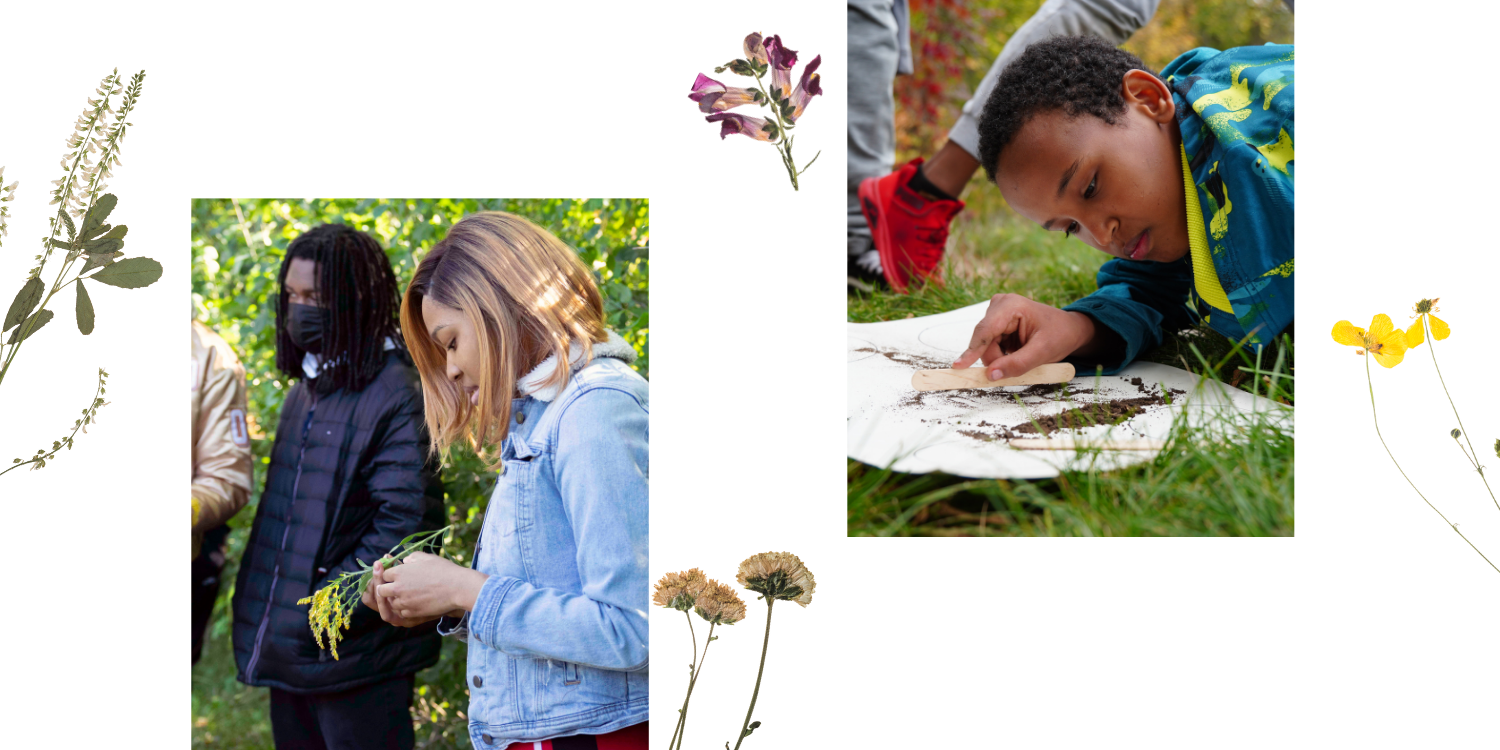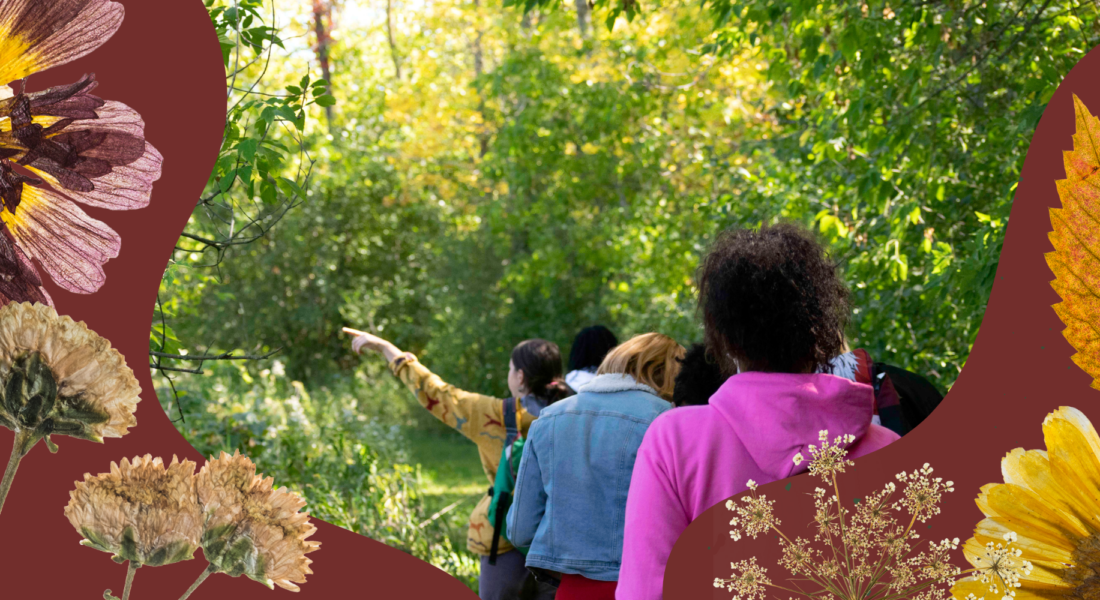As the school year begins, lines of parents dropping off their campers are replaced with lines of school buses, bringing students to Tanadoona for days filled with nature-based learning.
In-person field trips return to Tanadoona, with brand-new and some revamped student favorites. From taking soil samples around camp, to learning about the adaptations animals develop to survive, students are experiencing hands-on learning in nature.

Educating youth for a greener future
Students from Menlo Park Academy section off plots of Tanadoona’s wetlands. They are tasked with identifying invasive species including Rhamnus cathartica, commonly known as buckthorn. They count, record, measure, and report the species in their plots to learn how invasive species can be detrimental to the wetland’s ecology.
These students are back for their second visit to Tanadoona and are eager to experience more environmental education. Their school director, Eyenga Bokamba, says nature-based learning is a big focus for students at Menlo Park Academy.
“We’re deciding as a school that climate change is a number one priority for our kids to understand,” Bokamba said. “We want them to be stewards of the environment. We want them to feel like they can do something about things.”
At Camp Fire, young people are encouraged to dream big and discover ways they can make a positive impact on the world. For some students, learning about nature is completely new, but for others it has been a life-long interest.

Kaija, a student from Menlo Park Academy, loves plants and aspires to become a botanist once she finishes school. She is hoping to travel the Powwow Trail and learn about the traditional uses of plants from her elders.
“School was never really my focus, but now it is,” Kaija shared. “I can’t wait to travel and have a chance to slow down and focus on plants.”
Connecting with nature and each other
Getting students out of the classroom and into nature helps them unplug and reconnect with themselves, their classmates, and the world around them. Coming out of a year of distance learning can be a difficult transition for youth, but through Camp Fire environmental education programming they are able to explore and build relationships, both personal and with nature.
Students from Menlo Park Academy take aim at the archery range. For many of them, this is a new experience, but they are all hoping to get a bullseye. One after another they shoot, and many students hit their target right at the center. They cheer and encourage each other along, in a way that some of their teachers say is a “breakthrough moment.”
“This is the first time I think I’ve seen her uncross her arms this year,” one teacher shares of a student.
At Camp Fire, environmental education lessons are an opportunity for students to branch out in a supportive setting—and just maybe spark a new passion. Giving youth the opportunity to get their hands dirty and experience things for themselves is always a priority when students participate in Camp Fire programming.

“You have to go everywhere and learn everywhere and center yourself in your own curiosity,” Bokamba said.
At the end of their day with Camp Fire, Menlo Park Academy students reflected on their triumphs and challenges.
“I hit a bullseye in archery,” said Maliea, “and I’m proud of everyone else who hit one too! I’m proud we all got to learn and experience something new.”
As we move into late fall and winter, field trips at Tanadoona as well as virtual and in-person in-class lessons with our trained naturalists continue – there are so many opportunities for youth to spark a love for nature and become good stewards of our natural world.
